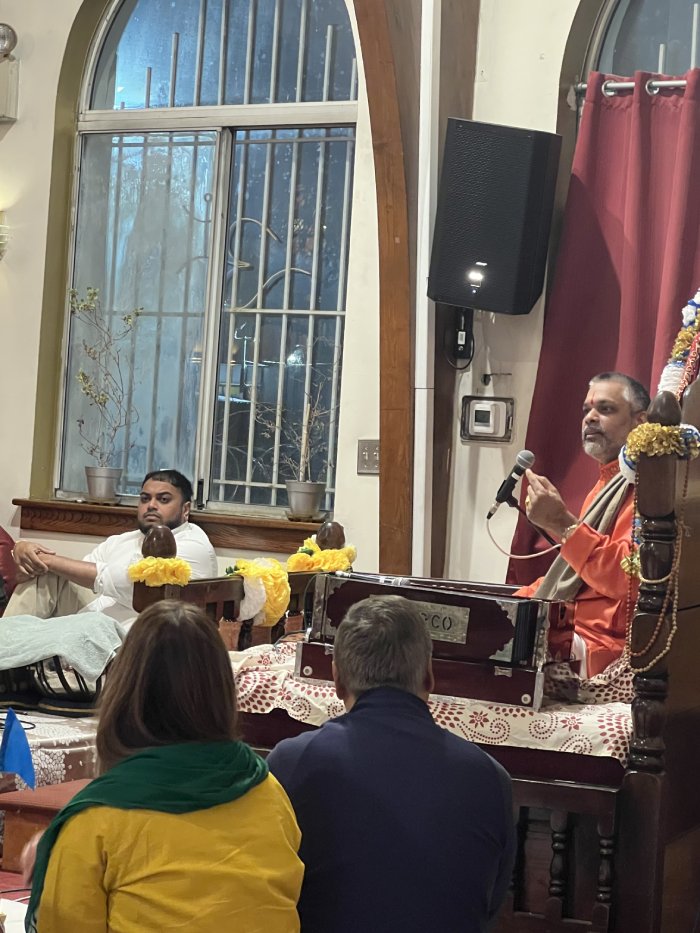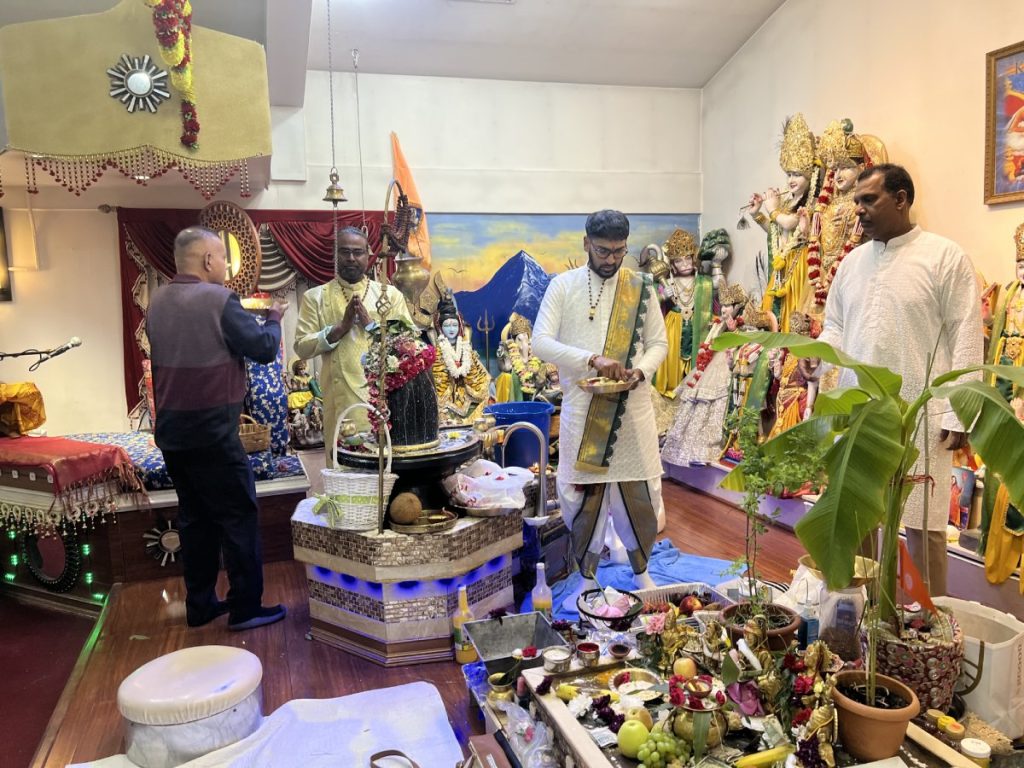Mahashivratri or Shivaratri was observed by the large Indo-Caribbean Hindu community and other Hindus in New York on February 25 and 26 at home and in mandirs. It is among the most important festivals of Hinduism glorifying Lord Shiva. Hindus thronged to the mandirs which were packed with worshippers, some overflowing. Shivratri is a night festival and usually fall on the eve of a new moon in late February or early March, before the full moon festival of Holi or Phagwah. The tithi this year fell on two evenings, leading to observance in some mandirs on Tuesday night and in others on Wednesday evening. In India, Shivratri fell on Wednesday evening with the day also observed as a holiday, unlike in the Caribbean.
Shivaratri obtains its name from the word rath which means night. It is a night of worshipping Shiva. So Shivaratri is observed in the evening, but puja is also performed during the day and following morning before sunrise. Some devotees kept vigil all night singing praises and offering supplications to the Lord. This is not to suggest that Shiva is worshipped only on this day as the Lord can be worshipped on any day/night, but an auspicious day has been set aside annually for the exclusive worshipping of Shiva, who Hindus consider as the fountain of all cosmic energy and power.

Shiva is known as the Destroyer in the Hindu Trinity of Brahma (the Creator), Vishnu (the Protector and Preserver), and Shiva (Destroyer of evils). For Hindus, Shiva is the originator and Lord of all things in the universe. Shiva takes the form of a Lingham or Murthi that depicts the Lord. Worshippers performed oblations and rituals on or to the Murthi of Lord Shiva. It is felt that anyone who worships Shiva on the occasion is eternally blessed, and not surprisingly, mandirs were packed with devotees engrossed in praying to the Almighty.
There are over fifty West Indian mandirs in greater New York City and all attracted large numbers of worshippers who streamed into the temples during the evening and the following morning – praying and joining in the music and rituals. Shivratri worshipping in New York is similar to that in Guyana, Trinidad, Surinam, and other parts of the Caribbean with people making offerings to Shiva’s Lingham, an emblem through which the lord is propitiated. Devotees offered jaal (specially prepared milk and/or water with various spices, curd, honey, and other ingredients) and the three-pronged bael leaves in the day or at midnight followed by Aartee. Agarbatie was also lit. Prasad (mohanbhog, fruit) is also offered. Incense was burned; havan was performed. Fire glowed eternally in the havan kund. Worshippers performed non-stop jaal and aartee on the Shiva murthi and the lingham and performed havan (feeding of the fire with small pieces of wood and various spices). Pandits presided over service amidst bhajan and kirtan singing. Verses were chanted from the Shiv Purana scripture. Bliss, piousness and peace pervaded as the pandit conducted ceremonies as devotees kept vigil all night singing praises and offering supplications to the Lord.
The pandits explained that Shiva is worshipped to ward off dangers and evils assailing mankind. Devotees pray with utmost reverence (bhakti) to the lord. Devotees attempt to reach the pinnacle of divinity through meditation and concentration in their prayers on Shiva chanting Om Namah Shivaaya. The scripture says that anyone who fasts on Shivratri prostrating to Shiva would gain salvation or moksha. Just by attending temple or thinking of the Lord, devotees are rewarded with blessings. At the conclusion of rituals and ceremonies, aartee was performed. Attendees were treated to sumptuous dinner and prasad.
